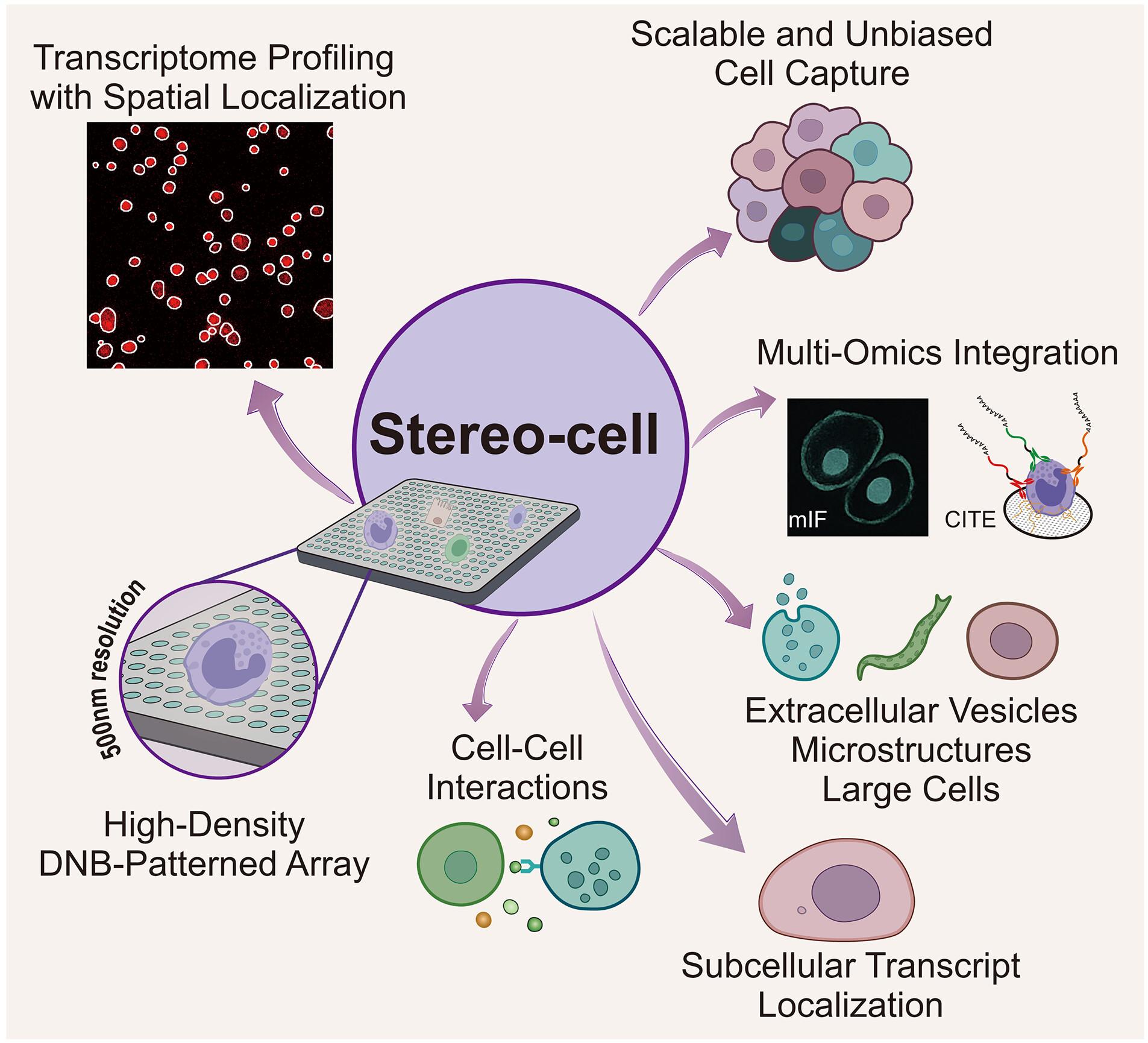立体细胞:空间增强分辨率单细胞测序与高密度DNA纳米球模式阵列
IF 45.8
1区 综合性期刊
Q1 MULTIDISCIPLINARY SCIENCES
引用次数: 0
摘要
单细胞测序技术提高了我们对细胞异质性和生物复杂性的理解。然而,现有的方法在吞吐量、捕获均匀性、单元大小灵活性和技术可扩展性方面存在局限性。我们提出立体细胞,一个基于高密度DNA纳米球(DNB)模式阵列的空间增强分辨率单细胞测序平台,它可以在宽输入范围内实现可扩展和无偏的细胞捕获,并支持高保真转录组分析。立体细胞进一步允许整合基于成像的模式和多组学策略,包括免疫荧光和表位分析。该平台还兼容分析细胞外囊泡、微结构和大细胞,而其空间分辨率有助于细胞-细胞相互作用、细胞微环境和亚细胞转录物定位的原位分析。总之,Stereo-cell为扩展单细胞研究应用提供了一个灵活的框架。本文章由计算机程序翻译,如有差异,请以英文原文为准。

Stereo-cell: Spatial enhanced-resolution single-cell sequencing with high-density DNA nanoball-patterned arrays
Single-cell sequencing technologies have advanced our understanding of cellular heterogeneity and biological complexity. However, existing methods face limitations in throughput, capture uniformity, cell size flexibility, and technical extensibility. We present Stereo-cell, a spatial enhanced-resolution single-cell sequencing platform based on high-density DNA nanoball (DNB)–patterned arrays, which enables scalable and unbiased cell capture at a wide input range and supports high-fidelity transcriptome profiling. Stereo-cell further allows integration with imaging-based modalities and multiomics strategies, including immunofluorescence and epitope profiling. This platform is also compatible with profiling extracellular vesicles, microstructures, and large cells, whereas its spatial resolution facilitates in situ analysis of cell-cell interactions, cellular microenvironments, and subcellular transcript localization. Together, Stereo-cell provides a flexible framework for expanding single-cell research applications.
求助全文
通过发布文献求助,成功后即可免费获取论文全文。
去求助
来源期刊

Science
综合性期刊-综合性期刊
CiteScore
61.10
自引率
0.90%
发文量
0
审稿时长
2.1 months
期刊介绍:
Science is a leading outlet for scientific news, commentary, and cutting-edge research. Through its print and online incarnations, Science reaches an estimated worldwide readership of more than one million. Science’s authorship is global too, and its articles consistently rank among the world's most cited research.
Science serves as a forum for discussion of important issues related to the advancement of science by publishing material on which a consensus has been reached as well as including the presentation of minority or conflicting points of view. Accordingly, all articles published in Science—including editorials, news and comment, and book reviews—are signed and reflect the individual views of the authors and not official points of view adopted by AAAS or the institutions with which the authors are affiliated.
Science seeks to publish those papers that are most influential in their fields or across fields and that will significantly advance scientific understanding. Selected papers should present novel and broadly important data, syntheses, or concepts. They should merit recognition by the wider scientific community and general public provided by publication in Science, beyond that provided by specialty journals. Science welcomes submissions from all fields of science and from any source. The editors are committed to the prompt evaluation and publication of submitted papers while upholding high standards that support reproducibility of published research. Science is published weekly; selected papers are published online ahead of print.
 求助内容:
求助内容: 应助结果提醒方式:
应助结果提醒方式:


